Ergonomic chairs are characterized by their ability to provide a variety of adjustments and features that accommodate a healthier way to sit. But just like investing in the latest electronics for their added features, it doesn’t benefit you anymore than the last version if you don’t know how to properly use it. There are many new qualities that have taken office furniture to the next level in terms of health care and prevention, but we’ll start with the basics. Here is how to make sure you get the added benefits of ergonomics with simple and easy explanations on how to adjust your office chair.
Seat Height
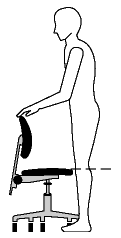
• When adjusting your seat for height, stand in front of your chair and adjust the seat so that its highest point is just below the kneecap.
• Most height adjustments can be done by holding a lever located under the seat cushion that allows the seat to move up and down
• Sit on the chair with your feet flat on the floor
• Your calves in relation to your thighs should be in a 90 degree angle.
Seat Depth
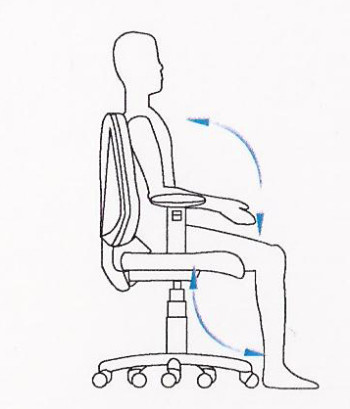
• The goal for measuring the depth of your seat is to match the length of your upper leg. If you do this, your back stays in contact with your back rest longer which supports better posture. It also puts pressure on the underside of your legs which helps with circulation.
• Your chair may have a sliding seat to adjust its distance from the backrest or the distance may be altered on other chairs by adjusting the backrest itself.
• Sit in the chair with your lower back touches the backrest of the chair and check that the clearance from the front edge of the seat and the top of your calves behind your knees fits a clenched fist (about 2 inches).
Back Support
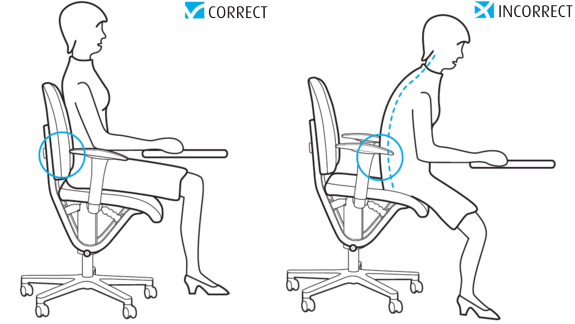
• The curve in your lower back needs to be lined up with the curve in the backrest. This will limit the amount of pressure on your lower lumbar and the muscles surrounding the discs.
• On some chairs the way to make this adjustment is simply by moving the backrest up and down to the desired position. Just change the seatback’s position until its curve feels comfortably aligned with the curve in your back.
• Other chairs have separate lumbar support that can be adjusted up and down as well as in and out. Try to line up both curves as said before.
Arm Rests
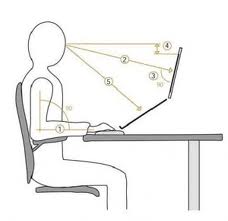 • Sit upright with your arms hanging loosely by your sides. Bend your elbows to make a right angle with your arm and adjust the armrests until they barely touch the undersides of your elbows.
• Sit upright with your arms hanging loosely by your sides. Bend your elbows to make a right angle with your arm and adjust the armrests until they barely touch the undersides of your elbows.
• Adjustments on armrests are typically made by buttons located on or under the armrests themselves.
• If your chair cant achieve this desired height or if in their lowest adjustment, they elevate your elbows even slightly, then remove the armrests.
• If you’re reaching at all for your armrest, your posture will be crooked and your back will suffer
And Don’t Forget Your Desk!
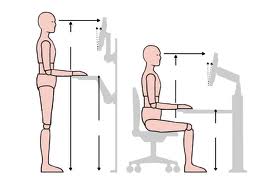 • After all your chair adjustments have been made, look at your desk in comparison. If your legs cannot fit under the desk surface with your chair at this new height, then your desk is too low for you.
• After all your chair adjustments have been made, look at your desk in comparison. If your legs cannot fit under the desk surface with your chair at this new height, then your desk is too low for you.
• If you need to elevate your arms in order to place them over the surface, then your desk is too high. You can just adjust your chair height, but then you should add a footrest, to keep your feet flat and your legs at a 90 degree angle.
